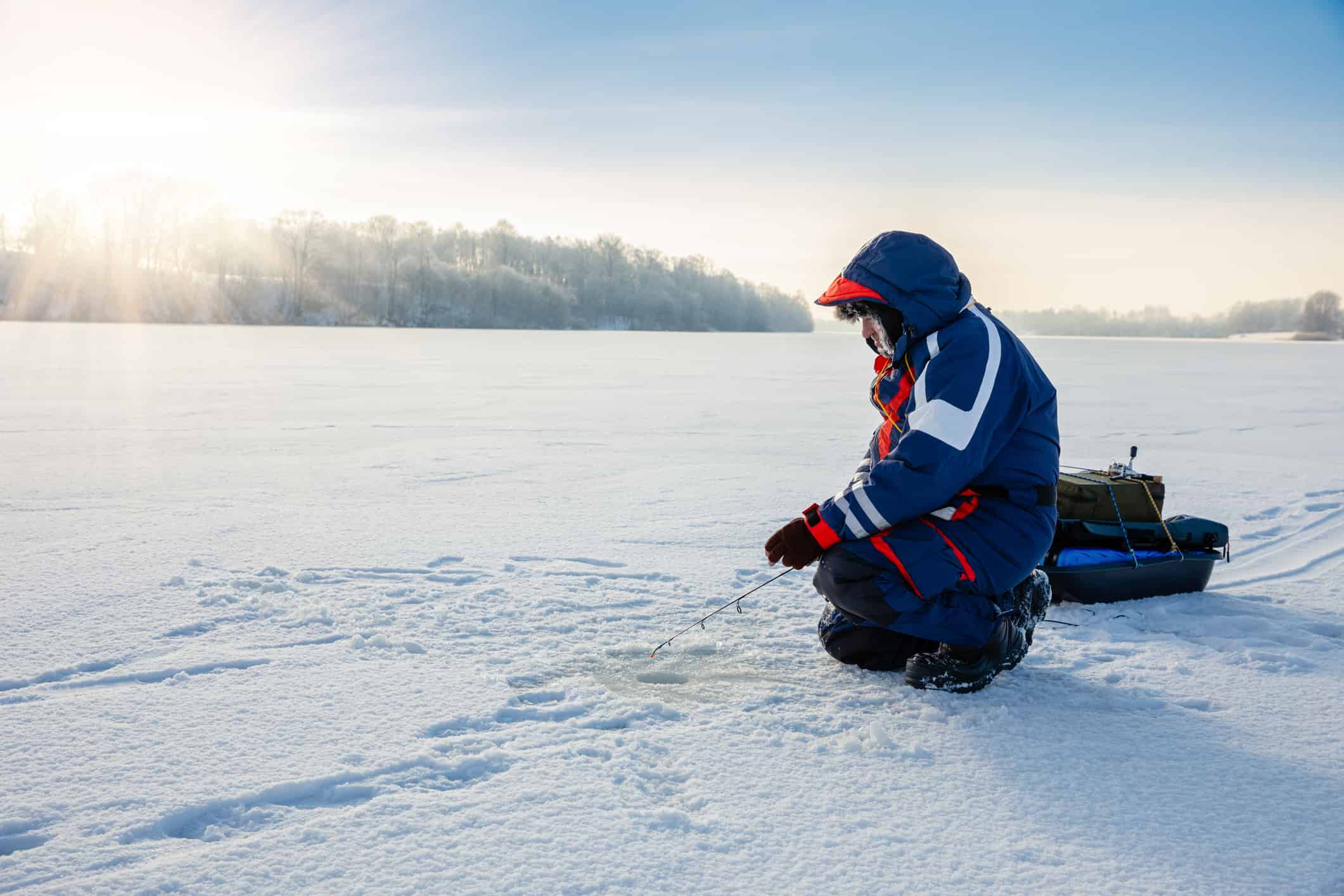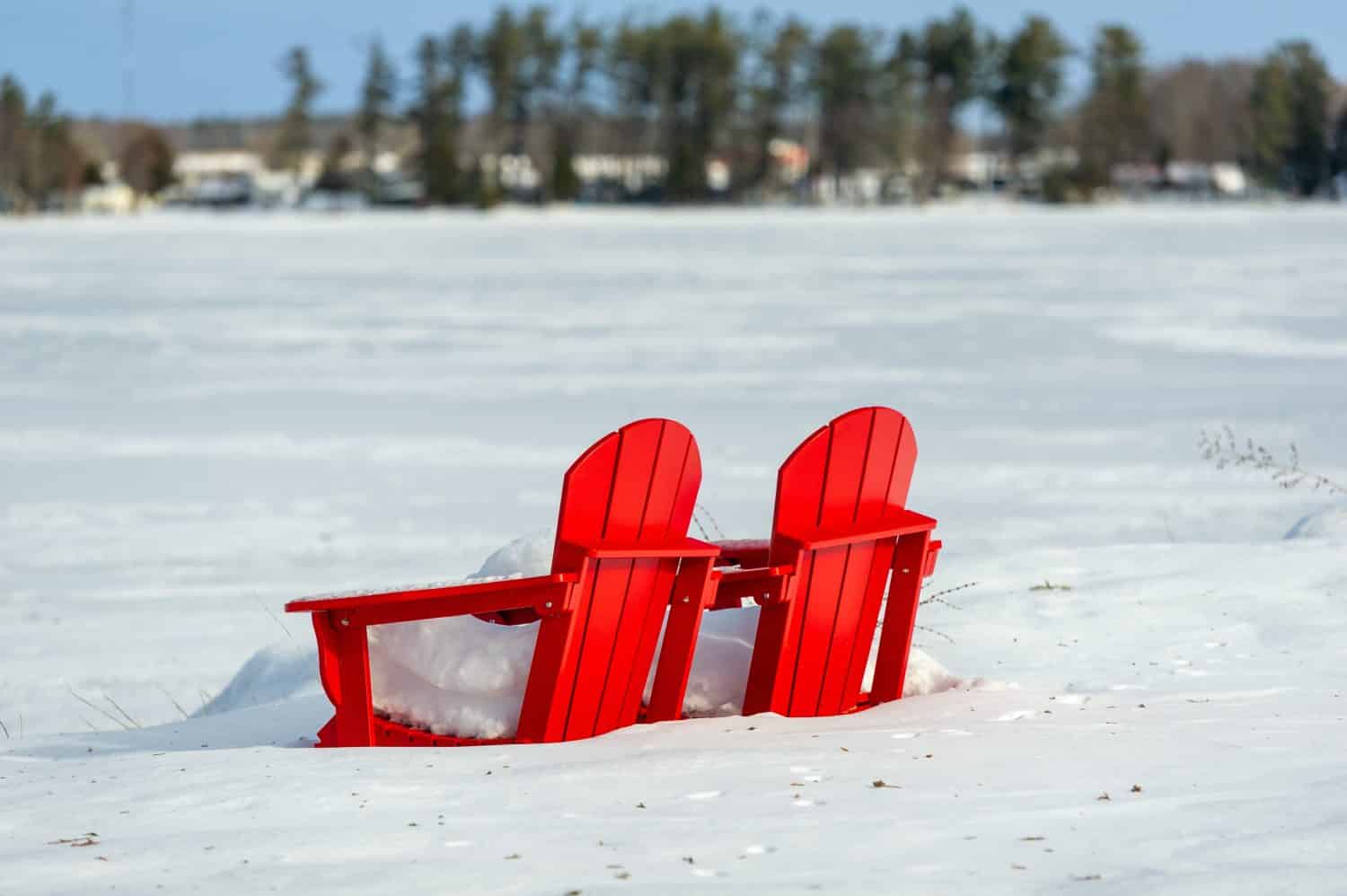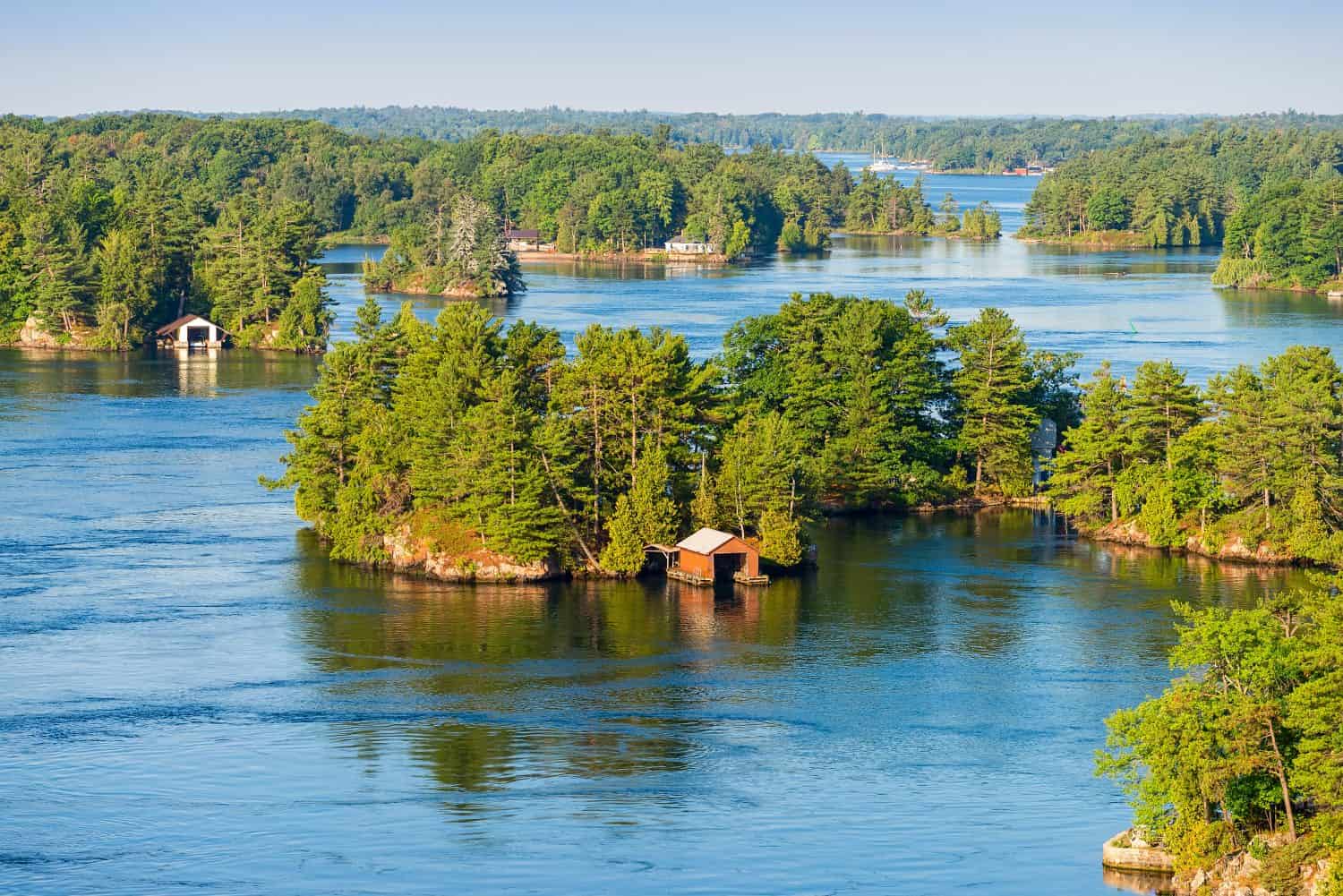The province of Ontario in east-central Canada shares its southern border with the Great Lakes and the United States. Winter here is cold and snowy because temperatures can reach below 32 degrees Fahrenheit or 0 degrees Celsius in most of the province. In December and through March, the days grow shorter, and gusting winds often make it feel colder. But this does not stop the residents from having fun!
There are over 250,000 lakes in this province; however, not all freeze over completely. Here, we review 5 lakes in Ontario that completely freeze over in the winter.
Lake Simcoe

Lake Simcoe is referred to as the ice-fishing capital of North America.
©smiltena/iStock via Getty Images
A 135-foot-deep lake remnant of prehistoric Lake Lake Algonquin, Lake Simcoe sits between Georgian Bay and Lake Ontario in Ontario’s southern region. It features an elevation of 719 feet (219m) above sea level with an area of 287.3 mi² (744 km²). Referred to as the ice-fishing capital of North America, the lake freezes over completely, but not every winter. Fishing enthusiasts find a variety of fish, such as yellow perch, small-mouth bass, whitefish, and lake trout.
Other area activities include ice skating, snowshoeing, ice hockey, cross-country skiing, and bird-watching. For the birdwatchers, species seen include white-breasted nuthatches, common redpolls, American goldfinches, blue jays, Northern cardinals, house and purple finches, black-capped chickadees, and the common loon, their provincial bird. Winter wildlife residents include skunks, opossums, raccoons, muskrats, beavers, porcupines, river otters, fishers, martens, mink, and weasels. In addition, there are deer, bears, foxes, and wolves.
Wawa Lake

The Wawa Goose Monument is said to be one of the most photographed landmarks in North America.
©LesPalenik/Shutterstock.com
Named after the Ojibway word for “wild goose,” Wawa is home to Lake Wawa. The area is famous for its Wawa Goose Monument, a 28-foot tall steel goose that overlooks Highway 17. Lake Wawa has a depth of 36 feet (10.9m) and an area of 14.7 miles (23.5 km) on 1,261 acres (510 hectares). Gold and iron discoveries were made here in the 19th century. In fact, from 1900 to 1918, the Helen Mine produced the most ore of any Canadian mine.
Ice fishing is a big sport here when the lake freezes over. Species caught include lake whitefish, Northern pike, and lake trout. Yes, the residents are serious about their fishing and even host an ice fishing derby with cash prizes! Other winter activities include snowmobiling and enjoying their winter carnival. The landscape is breathtakingly beautiful in this remote yet easily accessible region, and it is a popular destination during the winter months. In addition, wildlife in the area includes black bears, moose, and wolves.
Lake Muskoka

Lake Muskoka is known as the “Hamptons of the North” and is dotted with country clubs and mansions.
©Alessandro Cancian/Shutterstock.com
Located between Gravenhurst and Port Carling, this lake usually freezes over in mid-January, with complete freezing in March. It is 220 feet deep (67m) in an area of 34.36 mi² (55.29km²) and an elevation of 738 feet (224.9m) above sea level. Dotted with country clubs and mansions of the rich and famous, it is known as the “Hamptons of the North.” As a result, there is a lot to enjoy in the winter in this beautiful area, such as:
- Snowmobiling
- Hanna Park Skating Trail
- Ice skating
- Cross-country skiing
- Snowshoeing
- Ice fishing
Fish species here include Northern pike, whitefish, rainbow, and lake trout. Birders can enjoy pileated woodpeckers, common loons, Great blue herons, osprey, blue jays, and black-capped chickadees. In addition, winter animal sightings include black bears, moose, white-tailed deer, North American elk, snowshoe hare, red fox, and white-footed mice.
Lake of the Woods

Lake of the Woods is the “Walleye Capital of the World.”
©iStock.com/stammphoto
Thanks to its abundant supply of walleye, this lake is known as the “Walleye Capital of the World. However, the lake also holds musky, lake trout, smallmouth bass, trout, whitefish, and pike. Indeed, it is another of the popular ice-fishing lakes in the province! Located on the border of Manitoba and Minnesota in the United States, this shallow long lake is 85 miles (136.7km) in length, 56 miles (90.1km) wide, and has an area of 1,727 mi2 (4,472 km2), and is 310 feet (94.4m) deep. There are 14,522 islands on the lake, and it is one of the largest lakes in North America, with 25,000 miles of shoreline and a unique trait: it flows north!
The lake freezes over completely during the winter, with an average ice thickness of 25 to 30 inches. As a result, it becomes part of the Northwest Angle ice road, which runs from Warroad, MN, to Lake of the Woods’ northern shore. Another activity enjoyed here is snowmobiling. Wildlife in the area includes woodchucks, snowshoe hares, lynx, wolves, black bears, and moose. Bird species include herring gull, turkey vulture, bald eagle, pileated woodpecker, hooded merganser, and ruffed grouse.
Lac des Mille Lacs

Lac des Mille Lacs translates to “Lake of a Thousand Lakes” from the French, as it is dotted with islands, peninsulas, and bays.
©LesPalenik/Shutterstock.com
Located in northwestern Ontario the lake Lac des Mille Lacs translates to mean “Lake of a Thousand Lakes” from the French. This lake spans 94 mi2 with a depth of 20 feet and drains into the Hudson River. It’s an idyllic place 72 miles (117 km) northwest of Thunder Bay, near the town of Upsala. The landscape is dotted with islands, peninsulas, and bays. Ice fishing is a popular sport here when the lake freezes over by mid-December. In fact, sometimes it gets to be three feet thick! Fish species here include smallmouth bass, northern pike, and walleye. Birdwatchers enjoy seeing such birds as Great blue herons, common loons, ospreys, and bald eagles. Winter activities here include snowmobiling, cross-country skiing, snowshoeing, and sledding. Wildlife seen in the area includes Northern elk and moose.
Five Lakes in Ontario that Completely Freeze Over in the Winter
| Name of Lake | Location |
|---|---|
| Lake Simcoe | Southern Ontario north of Toronto |
| Wawa Lake | Northern Ontario in the town of Wawa |
| Lake Muskoka | Between Gravenhurst and Port Carling |
| Lake of the Woods | Border of Manitoba and Minnesota, US |
| Lac des Mille Lacs | Southern Ontario, north of Toronto |
The photo featured at the top of this post is © emkaplin/ via Getty Images
Thank you for reading! Have some feedback for us? Contact the AZ Animals editorial team.






